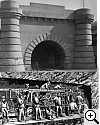Born 26 Dec 1901.
Dutch-American astronomer.
Dutch-American astronomer.
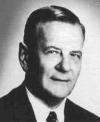
Born 26 Dec 1900; died 30 May 1992 at age 91. quotes
Polish-American mathematician who created a major analysis research centre at Chicago, and recognized in 1986 for this with the National Medal for Science. In 1940, he escaped with his wife and son from German controlled Poland to the USA. He did much work in harmonic analysis, a statistical method for determining the amplitude and period of certain harmonic or wave components in a set of data with the aid of Fourier series. Such technique can be applied in various fields of science and technology, including natural phenomena such as sea tides. He also did major work in Fourier analysis and its application to partial differential equations. Zygmund's book Trigonometric Series (1935) is a classic, definitive work on the subject.«
Polish-American mathematician who created a major analysis research centre at Chicago, and recognized in 1986 for this with the National Medal for Science. In 1940, he escaped with his wife and son from German controlled Poland to the USA. He did much work in harmonic analysis, a statistical method for determining the amplitude and period of certain harmonic or wave components in a set of data with the aid of Fourier series. Such technique can be applied in various fields of science and technology, including natural phenomena such as sea tides. He also did major work in Fourier analysis and its application to partial differential equations. Zygmund's book Trigonometric Series (1935) is a classic, definitive work on the subject.«
Trigonometric Series, by Antoni Zygmund. - book suggestion.
Born 26 Dec 1881; died 17 Mar 1945 at age 63. quotes
Welsh cardiologist who has been called the “father of clinical cardiac electrophysiology.” He coined the terms “clinical science,” “pacemaker,” “premature contractions,” and “auricular fibrillation.” Thomas Lewis studied the human heart, and how it functions to maintain the flow of blood throughout the body. He performed research on blood vessels and pain. To assist his investigations, Lewis advanced the use of the electrocardiograph, originally developed by William Einthoven. They built on the knowledge of the electrical activity in muscle fibres began with the discovery by Luigi Galvani that electrical stimulation could cause movement in a dead frog's leg (1790). Lewis didn't hesitate to use himself as a test subject. Ironically, he died from a heart attack (his third one).«
Welsh cardiologist who has been called the “father of clinical cardiac electrophysiology.” He coined the terms “clinical science,” “pacemaker,” “premature contractions,” and “auricular fibrillation.” Thomas Lewis studied the human heart, and how it functions to maintain the flow of blood throughout the body. He performed research on blood vessels and pain. To assist his investigations, Lewis advanced the use of the electrocardiograph, originally developed by William Einthoven. They built on the knowledge of the electrical activity in muscle fibres began with the discovery by Luigi Galvani that electrical stimulation could cause movement in a dead frog's leg (1790). Lewis didn't hesitate to use himself as a test subject. Ironically, he died from a heart attack (his third one).«
Sir Thomas Lewis: Pioneer Cardiologist and Clinical Scientist, by A. Hollman. - book suggestion.
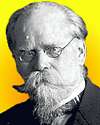
Born 26 Dec 1861; died 19 Mar 1928 at age 66. quotes
German seismologist and physicist who made significant contributions which developed geophysics and seismology as major scientific disciplines. In 1900, he invented the “inverted pendulum” seismograph, (an improvement still incorporated in today's instruments), with which he was able to detect some of the Earth's inner structure. He suggested the Earth has an inner, dense core of nickel-iron metal which had settled to the center like iron settles from slag on the hearth of an iron mill. As a student of his, Beno Gutenberg learned much, and went on to make advances in seismology. Although little remembered now, Wiechert made contributions in fundamental physics involving cathode rays, the Liénard–Wiechert potentials and his electron theory.«
German seismologist and physicist who made significant contributions which developed geophysics and seismology as major scientific disciplines. In 1900, he invented the “inverted pendulum” seismograph, (an improvement still incorporated in today's instruments), with which he was able to detect some of the Earth's inner structure. He suggested the Earth has an inner, dense core of nickel-iron metal which had settled to the center like iron settles from slag on the hearth of an iron mill. As a student of his, Beno Gutenberg learned much, and went on to make advances in seismology. Although little remembered now, Wiechert made contributions in fundamental physics involving cathode rays, the Liénard–Wiechert potentials and his electron theory.«
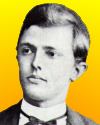
Born 26 Dec 1853; died 25 Apr 1940 at age 86.
German archaeologist who was the first to study the construction of ancient Greek theatres. He worked with Ernst Curtius as a member of the excavation team at the Olympia site in Greece (1877-81), where Dörpfeld developed the method of dating ancient archaeological sites based on the strata in which objects were found and the type of building materials. He excavated the Mycenaean palace at Tiryns, Greece (1884-85). He was an associate of the German archaeologist Heinrich Schliemann assisting in the search for the Harbour of Troy, at Hisarlik, Turkey (1882-83). Dörpfeld continued that work (1893-94) after Schliemann's death.«
German archaeologist who was the first to study the construction of ancient Greek theatres. He worked with Ernst Curtius as a member of the excavation team at the Olympia site in Greece (1877-81), where Dörpfeld developed the method of dating ancient archaeological sites based on the strata in which objects were found and the type of building materials. He excavated the Mycenaean palace at Tiryns, Greece (1884-85). He was an associate of the German archaeologist Heinrich Schliemann assisting in the search for the Harbour of Troy, at Hisarlik, Turkey (1882-83). Dörpfeld continued that work (1893-94) after Schliemann's death.«
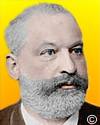
Born 26 Dec 1838; died 8 Oct 1904 at age 65. quotes
German chemist who discovered the element germanium (1886). He had a background in managing a cobalt glassworks and then on the faculty of the Freiberg School of Mining. Early in his career, he developed new techniques for industrial gas analysis and developed the Winkler gas burette. When, having been asked by the Freiberg Academy of Mining to analyze the mineral argyrodite (a silver sulphide ore), he found that all the known elements it contained amounted to only 93% of its weight. After spending four months tracking down and isolating the remaining 7%, he found the new element he called germanium, for Germany. This turned out to be the third of the elements (eka-silicon) predicted by Dmitry I. Mendeleyev in 1871.« more
German chemist who discovered the element germanium (1886). He had a background in managing a cobalt glassworks and then on the faculty of the Freiberg School of Mining. Early in his career, he developed new techniques for industrial gas analysis and developed the Winkler gas burette. When, having been asked by the Freiberg Academy of Mining to analyze the mineral argyrodite (a silver sulphide ore), he found that all the known elements it contained amounted to only 93% of its weight. After spending four months tracking down and isolating the remaining 7%, he found the new element he called germanium, for Germany. This turned out to be the third of the elements (eka-silicon) predicted by Dmitry I. Mendeleyev in 1871.« more
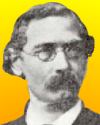
Born 26 Dec 1825; died 10 Aug 1895 at age 69.
Ernst Felix (Immanuel) Hoppe-Seyler was a German physician, who was a pioneer of physiological chemistry (biochemistry). He studied the chemical of blood and urine using the new technique of absorption spectroscopy, prepared hemoglobin in crystalline form and clarified its role in red blood cells. He demonstrated that the oxidation reactions between haemoglobin, oxygen and carbon monoxide took place in the tissues rather than in the blood itself. He also studied chlorophyll and was the first to prepare lecithin in a pure form. He coined the word proteid, now replaced with the word protein. He also investigated bile acids, lipid metabolism, quantification and classification of proteins and inspired research on nucleic acids.«
Ernst Felix (Immanuel) Hoppe-Seyler was a German physician, who was a pioneer of physiological chemistry (biochemistry). He studied the chemical of blood and urine using the new technique of absorption spectroscopy, prepared hemoglobin in crystalline form and clarified its role in red blood cells. He demonstrated that the oxidation reactions between haemoglobin, oxygen and carbon monoxide took place in the tissues rather than in the blood itself. He also studied chlorophyll and was the first to prepare lecithin in a pure form. He coined the word proteid, now replaced with the word protein. He also investigated bile acids, lipid metabolism, quantification and classification of proteins and inspired research on nucleic acids.«
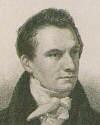
Born 26 Dec 1791; died 18 Oct 1871 at age 79. quotes
English mathematician who was a pioneer of mechanical computation, which he pursued to eliminate inaccuracies in mathematical tables. By 1822, he had a small calculating machine able to compute squares. He produced prototypes of portions of a larger Difference Engine. (Georg and Edvard Schuetz later constructed the first working devices to the same design which were successful in limited applications.) In 1833 he began his programmable Analytical Machine, a forerunner of modern computers. His other inventions include the cowcatcher, dynamometer, standard railroad gauge, uniform postal rates, occulting lights for lighthouses, Greenwich time signals, heliograph opthalmoscope. He also had an interest in cyphers and lock-picking.«[EB gives birth date 26 Dec 1791.DSB gives birth date as 26 Dec 1792.]
English mathematician who was a pioneer of mechanical computation, which he pursued to eliminate inaccuracies in mathematical tables. By 1822, he had a small calculating machine able to compute squares. He produced prototypes of portions of a larger Difference Engine. (Georg and Edvard Schuetz later constructed the first working devices to the same design which were successful in limited applications.) In 1833 he began his programmable Analytical Machine, a forerunner of modern computers. His other inventions include the cowcatcher, dynamometer, standard railroad gauge, uniform postal rates, occulting lights for lighthouses, Greenwich time signals, heliograph opthalmoscope. He also had an interest in cyphers and lock-picking.«[EB gives birth date 26 Dec 1791.DSB gives birth date as 26 Dec 1792.]
Charles Babbage: Pioneer of the Computer, by Anthony Hyman. - book suggestion.
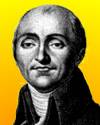
Born 26 Dec 1756; died 6 Oct 1825 at age 68. quotes
Bernard-Germain-Étienne de La Ville-sur-Illon, comte de (count of) Lacépède was a French naturalist who was interested in herpetology and ichthyology. Buffon secured him a position at the Jardin du Roi (later the Jardin des Plantes) and invited him to continue his work Histoire Naturelle in animal classification. To supplement Buffon's work, Lacépède published several volumes which dealt with the oviparous quadrupeds (1788), reptiles (1789), fishes (1798-1803), and whales (1804). After the French Revolution, he became a politician, which activity prevented him making any further contribution of importance to science.«
Bernard-Germain-Étienne de La Ville-sur-Illon, comte de (count of) Lacépède was a French naturalist who was interested in herpetology and ichthyology. Buffon secured him a position at the Jardin du Roi (later the Jardin des Plantes) and invited him to continue his work Histoire Naturelle in animal classification. To supplement Buffon's work, Lacépède published several volumes which dealt with the oviparous quadrupeds (1788), reptiles (1789), fishes (1798-1803), and whales (1804). After the French Revolution, he became a politician, which activity prevented him making any further contribution of importance to science.«
Born c. 26 Dec 1666; died 25 Feb 1736.
English electrical experimenter and astronomer.
English electrical experimenter and astronomer.
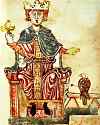
Born 26 Dec 1194; died 13 Dec 1250 at age 55.
Frederick II of Hohenstaufen was a German emperor and ornithologist who was a German ruler, residing in Sicily. He was a multilingual man of learning, who corresponded with and patronized scholars. He battled with the papacy, but otherwise practiced religious tolerance, and interacted with learned Jews, Muslims and Christians. His interest spanned science, especially natural history. He kept a menagerie which at various times had not only monkeys and camels, but also a giraffe and an elephant. His notable contribution to scientific ornithology was with a six-volume work, De arte venandi cum avibus (c.1244-48). In addition to some treatment of falconry, he presented his own observations (rather than perpetuating accepted hearsay knowledge) with remarks on hundreds of kinds of birds, with generalizations on their behaviour, anatomy and physiology. «[Miniature painting of Holy Roman Emperor Frederick II with a falcon from De arte venandi cum avibus, in Vatican Library.]
Frederick II of Hohenstaufen was a German emperor and ornithologist who was a German ruler, residing in Sicily. He was a multilingual man of learning, who corresponded with and patronized scholars. He battled with the papacy, but otherwise practiced religious tolerance, and interacted with learned Jews, Muslims and Christians. His interest spanned science, especially natural history. He kept a menagerie which at various times had not only monkeys and camels, but also a giraffe and an elephant. His notable contribution to scientific ornithology was with a six-volume work, De arte venandi cum avibus (c.1244-48). In addition to some treatment of falconry, he presented his own observations (rather than perpetuating accepted hearsay knowledge) with remarks on hundreds of kinds of birds, with generalizations on their behaviour, anatomy and physiology. «[Miniature painting of Holy Roman Emperor Frederick II with a falcon from De arte venandi cum avibus, in Vatican Library.]
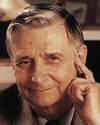
Died 26 Dec 2021 at age 92 (born 10 Jun 1929). quotes
Edward Osborne Wilson was an American biologist recognized as the world's leading authority on ants who has conducted extensive studies of the ecology and evolution of the ant. He has travelled the world studying ant populations, and he has discovered several new ant species. These currently number practically 9,000, but Wilson predicts that count will someday total nearly 20,000. He also estimates that within these species there are over a million billion individuals. In 1967, he co-published The Theory of Island Biogeography, a study of islands, which examines the relation between island size, the number of species contained, and their evolutionary balance. He is also active in sociobiology, a genetic study of social behaviour.
Edward Osborne Wilson was an American biologist recognized as the world's leading authority on ants who has conducted extensive studies of the ecology and evolution of the ant. He has travelled the world studying ant populations, and he has discovered several new ant species. These currently number practically 9,000, but Wilson predicts that count will someday total nearly 20,000. He also estimates that within these species there are over a million billion individuals. In 1967, he co-published The Theory of Island Biogeography, a study of islands, which examines the relation between island size, the number of species contained, and their evolutionary balance. He is also active in sociobiology, a genetic study of social behaviour.
Naturalist, by Edward O. Wilson. - book suggestion.
Died 26 Dec 2018 at age 93 (born 16 May 1925). quotes
Nancy Grace Roman was an American astronomer who was the first woman to hold an executive position at NASA. She was the first Chief of Astronomy at the headquarters Office of Space Science. Her “Mother of Hubble” nickname resulted from planning the development of the Hubble Space Telescope. Other programs included theCosmic Background Explorer. Starting her lifelong career interest at age 11, she formed an astronomy club with classmates, and went on to a PhD in astronomy (1949). After joining NASA (1959), she rose to become manager of the Astronomical Data Center at Goddard Space Flight Center. Even after retiring, she continued as a contractor at Goddard. Encouraging young women to pursue careers in science and engineering was also a lifetime passion.«
Nancy Grace Roman was an American astronomer who was the first woman to hold an executive position at NASA. She was the first Chief of Astronomy at the headquarters Office of Space Science. Her “Mother of Hubble” nickname resulted from planning the development of the Hubble Space Telescope. Other programs included theCosmic Background Explorer. Starting her lifelong career interest at age 11, she formed an astronomy club with classmates, and went on to a PhD in astronomy (1949). After joining NASA (1959), she rose to become manager of the Astronomical Data Center at Goddard Space Flight Center. Even after retiring, she continued as a contractor at Goddard. Encouraging young women to pursue careers in science and engineering was also a lifetime passion.«
Died 26 Dec 2010 at age 95 (born 15 Jul 1915).
American nuclear physicist who co-discovered 12 new elements.
American nuclear physicist who co-discovered 12 new elements.
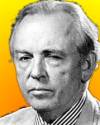

Irish cardiologist who developed the life-saving portable defibrillator. He found out that death occurred within the first hour for 60% of males (up to middle-age) that died from heart attack, and of these, 90% suffered ventricular fibrillation. To begin earliest possible treatment, in 1965, Pantridge equipped an ambulance with a portable defibrillator. It achieved a 50% long-term patient survival rate. This pre-hospital coronary care plan was adopted rapidly in America and was used in 1972 when President Lyndon Johnson suffered a heart attack during a visit to Virginia. In 1979, the first automated external defibrillators (AEDs) became available. The British government lagged, but in 1990 funded defibrillators for all front-line ambulances in England.«[Image right: Karrier, first purpose built Mobile Cardiac Ambulance (source)]
An Unquiet Life Hardcover, by Frank Pantridge. - book suggestion.

Died 26 Dec 1985 at age 53 (born 16 Jan 1932). quotes
American zoologist who for years made a daily study of the mountain forest gorillas of Rwanda, central Africa. In 1963, she met Louis and Mary Leakey, who encouraged her initial interest. With Jane Goodall's encouragement, she set up and directed (1967-80) the Karisoke Research Center, Rwanda. Living a solitary life for many years, she observed the gorillas’ habits and gradually gained their acceptance. She wrote Gorillas in the Mist (1983) to acquaint the public with the threats to the gorillas from poachers and loss of habitat. In 1985, Fossey’s mutilated body, hacked by machete, was found near the centre. Poachers, whose devastating attacks on the gorillas she had tried to stop, were suspected for her murder, although unproved.«
American zoologist who for years made a daily study of the mountain forest gorillas of Rwanda, central Africa. In 1963, she met Louis and Mary Leakey, who encouraged her initial interest. With Jane Goodall's encouragement, she set up and directed (1967-80) the Karisoke Research Center, Rwanda. Living a solitary life for many years, she observed the gorillas’ habits and gradually gained their acceptance. She wrote Gorillas in the Mist (1983) to acquaint the public with the threats to the gorillas from poachers and loss of habitat. In 1985, Fossey’s mutilated body, hacked by machete, was found near the centre. Poachers, whose devastating attacks on the gorillas she had tried to stop, were suspected for her murder, although unproved.«
Gorillas in the Mist, by Dian Fossey. - book suggestion.

Died 26 Dec 1960 at age 74 (born 19 Mar 1886).
Italian-American aviator who designed and built airplanes, including the first U.S. monoplane with an enclosed cabin (1917). He had a flying school (1912-16) at Long Island, N.Y., where he built and learned to fly his first plane. In 1917, he designed the first enclosed-cabin monoplane, which he flew successfully in air races. The CF airliner he created in 1920 could carry four passengers in an enclosed cabin. It won three major performance contests in 1922. Although regarded as “the world's best airplane,” he couldn't sell them, in a market glutted with surplus WW I airplanes. In 1931, Pangborn and Herdon flew a Bellanca plane on the first Japan-to-U.S. nonstop flight.«
Italian-American aviator who designed and built airplanes, including the first U.S. monoplane with an enclosed cabin (1917). He had a flying school (1912-16) at Long Island, N.Y., where he built and learned to fly his first plane. In 1917, he designed the first enclosed-cabin monoplane, which he flew successfully in air races. The CF airliner he created in 1920 could carry four passengers in an enclosed cabin. It won three major performance contests in 1922. Although regarded as “the world's best airplane,” he couldn't sell them, in a market glutted with surplus WW I airplanes. In 1931, Pangborn and Herdon flew a Bellanca plane on the first Japan-to-U.S. nonstop flight.«
Giuseppe Bellanca's Golden Age: The Golden Age of Aviation Series, by A. and D.W. Abel. - book suggestion.
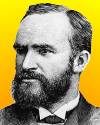
Died 26 Dec 1931 at age 80 (born 10 Dec 1851).
American librarian who developed library science in the U.S., especially with his system of classification, the Dewey Decimal Classification (1876), for library cataloging. His system of classification (1876) uses numbers from 000 to 999 to cover the general fields of knowledge and designating more specific subjects by the use of decimal points. He was an activist in the spelling reform and metric system movements. Dewey invented the vertical office file, winning a gold medal at the 1893 World's Fair. It was essentially an enlarged version of a card catalogue, where paper documents hung vertically in long drawers.«
American librarian who developed library science in the U.S., especially with his system of classification, the Dewey Decimal Classification (1876), for library cataloging. His system of classification (1876) uses numbers from 000 to 999 to cover the general fields of knowledge and designating more specific subjects by the use of decimal points. He was an activist in the spelling reform and metric system movements. Dewey invented the vertical office file, winning a gold medal at the 1893 World's Fair. It was essentially an enlarged version of a card catalogue, where paper documents hung vertically in long drawers.«
Melvil Dewey: The Man and the Classification, by Stevenson and Kramer. - book suggestion.
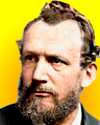
Died 26 Dec 1896 at age 78 (born 7 Nov 1818). quotes
German physiologist whose research on animal electricity in nerve and muscle fibres founded modern electrophysiology. In 1849, he detected minute electrical discharges created by the contraction of the muscles in his arms, using galvanometer, a primitive device for measuring voltages. He used pieces of saline- soaked blotting paper between the wires and his skin to keep electrical resistance in the connection to a minimum. Realizing that the skin still acted as a barrier to the underlying muscle signals, he induced a blister on each arm, removed the skin and placed the paper electrodes within the wounds. Then the electrical signals he captured were about 30 times stronger. In 1850, he invented a nerve galvanometer with better sensitivity.«
German physiologist whose research on animal electricity in nerve and muscle fibres founded modern electrophysiology. In 1849, he detected minute electrical discharges created by the contraction of the muscles in his arms, using galvanometer, a primitive device for measuring voltages. He used pieces of saline- soaked blotting paper between the wires and his skin to keep electrical resistance in the connection to a minimum. Realizing that the skin still acted as a barrier to the underlying muscle signals, he induced a blister on each arm, removed the skin and placed the paper electrodes within the wounds. Then the electrical signals he captured were about 30 times stronger. In 1850, he invented a nerve galvanometer with better sensitivity.«
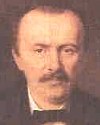
Died 26 Dec 1890 at age 68 (born 6 Jan 1822).
German archaeologist who excavated sites at Troy, Mycenae, and Tiryns he associated with Homer's Iliad and Vergil's Aeneid. After a successful business career, Schliemann retired (1863) to pursue his childhood ambition of discovering Homeric Troy. Ignoring scholarly derision, he excavated Hissarlik on the Asia Minor coast of Turkey, finding ruins of nine consecutive cities. The second oldest (Troy II), which he wrongly identified with Homer's city, yielded a hoard that Schliemann romantically called "Priam's Treasure." His spectacular finds in Greece at Mycenae (1874-76), Orchomenos in Boeotia (1880), and Tiryns (1884-85) established him as the discoverer of Mycenaean civilization and the leader in discovery of prehistoric Greece.«
German archaeologist who excavated sites at Troy, Mycenae, and Tiryns he associated with Homer's Iliad and Vergil's Aeneid. After a successful business career, Schliemann retired (1863) to pursue his childhood ambition of discovering Homeric Troy. Ignoring scholarly derision, he excavated Hissarlik on the Asia Minor coast of Turkey, finding ruins of nine consecutive cities. The second oldest (Troy II), which he wrongly identified with Homer's city, yielded a hoard that Schliemann romantically called "Priam's Treasure." His spectacular finds in Greece at Mycenae (1874-76), Orchomenos in Boeotia (1880), and Tiryns (1884-85) established him as the discoverer of Mycenaean civilization and the leader in discovery of prehistoric Greece.«
Lost and Found: The 9,000 Treasures of Troy: Heinrich Schliemann and the Gold That Got Away, by Caroline Moorehead. - book suggestion.
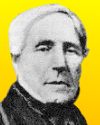
Died 26 Dec 1869 at age 72 (born 22 Apr 1797).
French physician and physiologist who contributed to knowledge of blood circulation through arteries and experimentally derived an equation describing the laminar flow rate of fluids through narrow tubes (now known as the Hagen- Poiseuille equation because the German engineer Gotthilf Hagen also independently discovered it). It relates the flow rate to the fluid's viscosity, the pressure drop along the tube, and the radius of the tube. His interest in the circulation of the blood led him to conduct experiments on the flow of liquids in narrow tubes. Poiseuille is believed to be the first to have used the mercury manometer to measure blood pressure with his invention, the hemodynamometer, an improved method for measuring blood pressure.«[DSB gives birth date as 22 Apr 1797. EB gives 22 Apr 1799.]
French physician and physiologist who contributed to knowledge of blood circulation through arteries and experimentally derived an equation describing the laminar flow rate of fluids through narrow tubes (now known as the Hagen- Poiseuille equation because the German engineer Gotthilf Hagen also independently discovered it). It relates the flow rate to the fluid's viscosity, the pressure drop along the tube, and the radius of the tube. His interest in the circulation of the blood led him to conduct experiments on the flow of liquids in narrow tubes. Poiseuille is believed to be the first to have used the mercury manometer to measure blood pressure with his invention, the hemodynamometer, an improved method for measuring blood pressure.«[DSB gives birth date as 22 Apr 1797. EB gives 22 Apr 1799.]
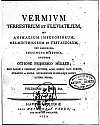
Died 26 Dec 1784 at age 54 (born 2 Nov 1730).
German-Danish biologist and microscopist who concentrated on viewing bacteria, as previously seen only dimly by Antonie Leeuwenhoek. Despite the limited resolution of the microscopes of his time, Müller was the first to see bacteria with sufficient clarity to divide them into categories, and introduced to the world the new animal kingdom of Infusoria. In 1773, he was the first to describe diatoms. He coined the terms baccilum and spirillum and was also was the first to make a general classification of micro-organisms, following the scheme of Linnaeus. He invented the naturalist's dredge.
German-Danish biologist and microscopist who concentrated on viewing bacteria, as previously seen only dimly by Antonie Leeuwenhoek. Despite the limited resolution of the microscopes of his time, Müller was the first to see bacteria with sufficient clarity to divide them into categories, and introduced to the world the new animal kingdom of Infusoria. In 1773, he was the first to describe diatoms. He coined the terms baccilum and spirillum and was also was the first to make a general classification of micro-organisms, following the scheme of Linnaeus. He invented the naturalist's dredge.
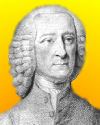
Died 26 Dec 1780 at age 68 (born 8 Mar 1712).
English physician who was first to describe coronary arteriosclerosis (hardening and thickening of the arterial wall, with a loss of elasticity and reduced blood flow) associated with angina pectoris. He began his medical practise in 1740. He was first to give a substantial description of diphtheria in England in his Account of the Sore Throat Attended With Ulcers (1748), and credited with the first accurate description of migraine. He promoted coffee as a beverage in England, and as a crop in the West Indies. As a Quaker and philanthropist, he maintained a botanical garden in Upton, supported John Howard in his penal reforms and aided Benjamin Franklin (1774) draft a scheme of reconciliation between England and the American colonies.«
English physician who was first to describe coronary arteriosclerosis (hardening and thickening of the arterial wall, with a loss of elasticity and reduced blood flow) associated with angina pectoris. He began his medical practise in 1740. He was first to give a substantial description of diphtheria in England in his Account of the Sore Throat Attended With Ulcers (1748), and credited with the first accurate description of migraine. He promoted coffee as a beverage in England, and as a crop in the West Indies. As a Quaker and philanthropist, he maintained a botanical garden in Upton, supported John Howard in his penal reforms and aided Benjamin Franklin (1774) draft a scheme of reconciliation between England and the American colonies.«
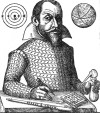
Died 26 Dec 1624 at age 51 (born 20 Jan 1573).
(Also known as Simon Mayr) German astronomer, pupil of Tycho Brahe, one of the earliest users of the telescope and the first in print to make mention the Andromeda nebula (1612). He studied and named the four largest moons of Jupiter as then known: Io, Europa, Ganymede and Callisto (1609) after mythological figures closely involved in love with Jupiter. Although he may have made his discovery independently of Galileo, when Marius claimed to have discovered these satellites of Jupiter (1609), in a dispute over priority, it was Galileo who was credited by other astronomers. However, Marius was the first to prepare tables of the mean periodic motions of these moons. He also observed sunspots in 1611.«[DSB gives date of birth 20 Jan 1573. EB gives 10 Jan 1573.]
(Also known as Simon Mayr) German astronomer, pupil of Tycho Brahe, one of the earliest users of the telescope and the first in print to make mention the Andromeda nebula (1612). He studied and named the four largest moons of Jupiter as then known: Io, Europa, Ganymede and Callisto (1609) after mythological figures closely involved in love with Jupiter. Although he may have made his discovery independently of Galileo, when Marius claimed to have discovered these satellites of Jupiter (1609), in a dispute over priority, it was Galileo who was credited by other astronomers. However, Marius was the first to prepare tables of the mean periodic motions of these moons. He also observed sunspots in 1611.«[DSB gives date of birth 20 Jan 1573. EB gives 10 Jan 1573.]
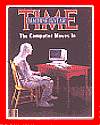
In 1982, The Man of the Year in Time magazine was a non-human for the first time. A computer received the honour as 1982's “greatest influence for good or evil.” The article recognized that, “By itself, the personal computer is a machine with formidable capabilities for tabulating, modeling or recording. Those capabilities can be multiplied almost indefinitely by plugging it into a network of other computers. This is generally done by attaching a desk-top model to a telephone line (two-way cables and earth satellites are coming increasingly into use). One can then dial an electronic data base, which not only provides all manner of information but also collects and transmits messages: electronic mail.”

In 1975, the Tupolev-144, the first passenger supersonic jet (SST) carried only mail and freight on its first commercial flight from Moscow to Alma-Ata, Kazakhstan. Although built to carry up to 140 passengers, it was at first limited to service carrying mail instead, because it was so loud. The expensive twice weekly flights were cut to weekly in Jun 1976. Passenger service did begin on 1 Nov 1977 on the same Moscow to Alma-Ata route. Plagued with chronic mechanical problems, the service ended 1 Jun 1978 after 102 flights. Officials mothballed the inefficient and dangerous aircraft. The first disastrous crash had occurred at the prestigious Paris air show on 3 Jun 1973 killing all six crew on board, and eight persons on the ground. Aeroflot ceased flying the Tupolev-144 SST airplanes on 6 June 1978.
The Soviet SST, by Howard Moon. - book suggestion.
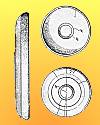
In 1967, a patent was issued to the Wham-O Mfg. Co. for their improvement of the Frisbee (U.S. No. 3,359,678) - an “aerodynamic toy to be thrown through the air … in throwing games.” It was described as a saucer shaped throwing implement with a series of concentric discontinuities adjacent the rim on its convex side. These molded rings were designed to provide “an interfering effect on the airflow over the implement and create a turbulent unseparated boundary layer over the top of the implement reducing aerodynamic drag.” The name began when William Russel Frisbie founded the Frisbie Pie Company in (1895). In 1948 the innovator Fred Morrison saw the students working there tossing empty pie forms to each other in their lunch break.
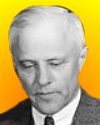
In 1950, the first winner of the William Procter Prize for Scientific Achievement was named on the opening day of the AAAS (American Association for the Advancement of Science) Meeting in Cleveland, Ohio. The award was given at a session three days later to Dr. Karl Taylor Compton, a former president of MIT. He was recognized for his achievement at that institution and for his contributions to research on the atomic bomb. The $1,000 award was presented to Compton by the Sigma Xi Scientific Research Society of America. The Prize was established by Dr. William Procter, a director of Procter & Gamble, Co., who was also an authority on the marine and insect life in the region of Mount Desert Island, Maine, site of his laboratory. The 2013 recipient was infectious disease expert Rita Colwell.«
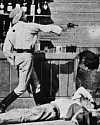
In 1906, the world's first full-length feature film, the 70-min Story of the Kelly Gang was presented in the Town Hall at Melbourne, Australia, where it had been filmed at a cost of £450. It preceded D.W. Griffith's The Birth of a Nation by nine years. The subject of the Australian movie was Ned Kelly, a bandit who lived 1855 to 1880. The film toured through Australia for over 20 years, and abroad in New Zealand and Britain. Since some people, including politicians and police viewed the content of the film as glorifying the criminals, the movie was banned (1907) in Benalla and Wangaratta and also in Victoria (1912). Only fragments totalling about 10 minutes of the original nitrate film have survived to the present.«[Image: detail from a frame of the Story of the Kelly Gang, possibly a police constable firing a shot at Dan Kelly.]
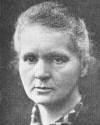
In 1898, Polish-French scientist Marie Sklodowska Curie discovered the radioactive element radium while experimenting with pitchblende, a common uranium ore. She had observed that this ore was more radioactive than refined uranium. This indicated that there must be another element, even more radioactive than uranium, mixed in with this ore. During the years between 1899 and 1902, Marie Curie dissolved, filtered and repeatedly crystallized nearly three tons of pitchblende. The goal of that work was a refined sample of the element - the yield was about 0.1 gram. This was enough for spectroscopic examination, and to determine the exact atomic weight of radium. This discovery, along with the element polonium, earned her a second Nobel Prize in 1911.
Madame Curie: A Biography, by Eve Curie. - book suggestion.
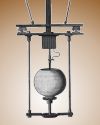
Brush arc lamp
In 1878, the first electric lighting in an American store was installed, using eight dynamos to run 28 Brush arc lamps* at John Wanamaker's extensive “Grand Depot” department store, Philadelphia, Pa. In 1875, he had bought the Pennsylvania Railroad depot for $500,000 and converted it into his innovative Grand Depot department store. The lamps had two sets of electrodes working alternately to lengthen the operating period. (patented by the maker, Charles F. Brush, on 2 Sep 1879, U.S. patent No. 219,208). The arc lamps gave a steadier light, but gas-lighting was retained as back-up. By 1888, Wanamaker had 355 arc lamps and 80 incandescent lamps*. He followed electric lights with ventilation fans. The electric displays drew customers.«
John Wanamaker: Philadelphia Merchant, by Herbert Ershkowitz. - book suggestion.
In 1870, the mid-point rock wall was removed and joined the two bores completing the Mont Cenis Tunnel through the Alps. Workers who had been digging towards each other from both sides of the mountain met and shook hands. The previous day, a hole had been drilled through the remaining 4 feet of rock between them, and the workers from the two bores could hear each other. The two bores met with an accuracy of within 2 feet vertically and about 18 inches horizontally. By the next year, twin railroad tracks had been laid, and the Mont Cenis Tunnel was opened on 17 Sep 1871. Digging had started in 1857, tediously slowly by hand boring, until French engineer Germain Sommeiller, introduced industrial-scale pneumatic drills. Train service began 16 Oct 1871.*«[Image top: Mont Cenis Tunnel entrance arch; bottom: Sommeiller Boring Machines.] more
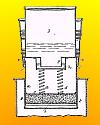
In 1865, James H. Mason of Franklin, Mass., was issued the first U.S. patent for a coffee percolator (No. 51,741).
In 1833, the first U.S. patent for an annunciator was issued to Seth Fuller of Boston, Mass. In 1829, this design was installed in the Tremont House, Boston, Mass., and placed in service when the 170-room hotel opened. It was known as "hanging bells" for its 140 bells, each in a glass-enclosed box, mounted in a space 57 ft long, 6 ft high and 1 ft deep. A small hammer striker provided an audible warning sound and vibrated a card giving the room number. The hotel's innovations included the installation of eight bathrooms and toilets in the basement. Each of two cisterns in the hotel attic contained three hogsheads of rainwater. One supplied the baths, and the other supplied other outlets, including running cold water in the laundry and kitchen.

